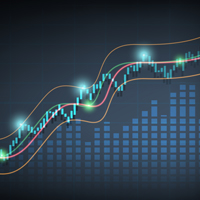Trading with Bollinger Bands
Published by Sharekhan Education | November 16, 2022

Fahim Ansari | Sharekhan Education
Introduction:
Before you begin to think about what trading might be like, you can take the help of some technical indicators that will help you make smarter trades that can enhance the probability of the trade working in your favor. Bollinger bands are one such indicator. They are not difficult to understand, but some traders never get the knack of knowing when and where they can be used to their advantage. With that in mind, this article will provide everything you need to know about these bands and how you can use them for your trading strategies.
Discovery of Bollinger Bands:
John Bollinger developed Bollinger Bands (BB) in the early 1980s. He discovered a relationship between the standard deviation of prices and their volatility. The standard deviation is a statistical measure of dispersion around a mean value, while volatility measures the extent to which a security’s price changes daily. They have become one of the most popular technical indicators in technical analysis and are found on every trading platform, which is used by many traders around the world today.
The Bollinger Bands are based on a normal distribution curve, which describes data that follows a normal distribution curve. The normal distribution curve represents different combinations of data points or values. This graph is called a “bell curve” because it resembles a bell-shaped curve with curved sides.
About Bollinger Bands:
Bollinger Bands are a form of technical analysis that is used to track the price action in a market. They are upper and lower trading bands designed to contain the price action in a market over a set period. The bands are usually drawn two standard deviations away from a simple moving average. They will expand and contract as the price action moves up and down, meaning the distance from the moving average can vary from one point to another. So, the upper band is +2σ (or 2σ above the mean), the middle line is the mean which is the 20-period moving average, and the lower band is -2σ (or 2σ below the mean). From trading perspective, if the price is within the upper and lower Bollinger Bands, it covers 95% of the time. When it surpasses the upper band, it’s considered an outlier.
- Identifying overbought & oversold conditions – The upper & lower bands provide a reference point for determining if the market is overbought or oversold.
- Bollinger’s band is a simple yet effective technical indicator that can be used to determine the current market trend, the strength or weakness of the current trend, and its potential reversal.
- Bollinger band allows you to see where prices have been in the past and where they may go in the future, which can help you predict price movements with greater accuracy than traditional methods; they can also provide a snapshot of current market sentiment.
The problem with using Bollinger Bands:
- Bollinger Bands are not a trading system but are often used as part of a trading strategy. John Bollinger says that penetration of the band itself is not a signal to buy or sell. The band will give you a tentative area of where to expect the price action, or, rather, where to expect the price reversal. On a standalone basis, it does not generate trading ideas. Still, it can be used with other non-correlated indicators like RSI and MACD, etc. So combining the Bollinger band with some technical tools is very important. We here at Sharekhan Education combine BB with our core strategy, which gives us an edge in finding winning trades.
- It is not very effective when the price is trending.
-
This was about Bollinger bands. To know more about other such trading concepts; enroll for our Free Power Money Workshop.
By Enrolling in this stock market course, you can learn the various aspects of Futures and Options Trading.
Disclaimer:
Investments in the securities market are subject to market risks, read all the related documents carefully before investing. For detailed disclaimer and registered office details visit link – https://www.sharekhan.com/disclaimer/Sharekhan_Education.html




